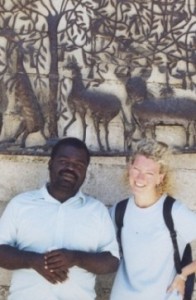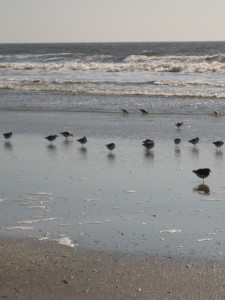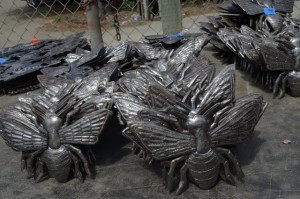The Art of Michee Remy Lives On
Two years ago, one of the most highly acclaimed active metal sculptors in Haiti died at the age of 41. Michee Ramil Remy began his artistic career at the age of 14 in the workshop of his stepfather, master craftsman Gabriel Bien-Aime. Over the next 28 years, he honed a distinctive style and level of expertise that generated international awards and accolades. From the first invitation to participate in the Haitian National Arts Exhibition in 1993 to attending the Smithsonian Folk Life Festival as a guest artist the following year, Michee’s talent became widely recognized. He was on the radar; busy and with an ever-growing demand for his work.
His association with Beyond Borders extends back to the mid-nineties. For fifteen years, we purchased and carried Michee’s work consistently, though almost always as one-of-a kinds. Throughout that time, he collaborated with Beyond Borders on only two catalogue pieces, preferring instead to produce single pieces of his art. It was a decision that founder Casey Riddell to this day acknowledges was for the best. “Some artists should never go into production. Their work is pure. It is uniquely their own and should stay that way. Michee is one of those artists.”
Fast-forward to 2009: Michee’s participation in the International Folk Art Market in Santa Fe attracted the attention of the Clinton
Global Initiative. He, along with Serge Jolimeau, another Haitian metal artist of distinction and Toyin Folorunso, a skilled metal artist from Nigeria, were commissioned to create sculptural awards for the Clinton Global Initiative’s Global Citizen honorees. Said Robert S. Harrison, Chief Executive officer of the CGI, “These men are not only talented artists, but they have become leading social entrepreneurs – creating jobs, invigorating the art community and training new generations of artists to pass along their traditions.” This selection brought further opportunity, in the form of a joint exhibition for Michee and Serge, originating at the North Miami Museum of Art and travelling on to the Clinton Presidential Library, where it was featured for several weeks.
In March of 2011, it all came to an abrupt end. Michee had battled numerous health issues for years; it was a battle he was not to win. Beyond Borders is both proud and fortunate to carry many of his remaining works. In them, the memory and creative genius of Michee Ramil Remy live on.
Contributed by Linda for Beyond Borders/It’s Cactus










![sm407[1]](https://blog.itscactus.com/wp-content/uploads/2013/06/sm4071.jpg)
![ht1396[2]](https://blog.itscactus.com/wp-content/uploads/2013/05/ht13962.jpg)
![mask1321[1] (382x640)](https://blog.itscactus.com/wp-content/uploads/2013/05/mask13211-382x640-179x300.jpg)



